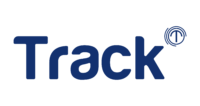Efficiently planning and scheduling maintenance for complex assets can be a challenge for companies. AI-powered optimization can provide tangible benefits to all areas of operations.
In order to minimize disruptions to operations, costs, health and safety, compliance, and customer experience, maintenance and operations teams need to be able to efficiently plan and schedule maintenance, repairs, and inspections for thousands of complex assets while balancing uptime and maintenance. Asset-oriented businesses face significant challenges in managing resources and conducting critical operations effectively. For some organizations, standard maintenance planning software is insufficient. This is where AI-powered maintenance planning and scheduling optimization can be beneficial. When implemented correctly, these solutions can have an immediate and tangible impact on all aspects of the business.
Challenges in Maintenance Planning and Scheduling Optimization
The need to balance uptime and maintenance. Organizations try to avoid over-maintaining assets as it incurs unnecessary costs and downtime (On average 65-75% of all planned maintenance tasks outside of the warranty period are not necessary). While under-maintaining assets may incur the cost and revenue impact of unplanned downtime due to machine failure or breaks. This can have a huge effect in the operations of the business resulting in poor customer satisfaction. Unplanned maintenance costs an average of 20-30% more than planned maintenance due to overtime and expedited shipping costs for spare parts. Therefore, it is crucial to consider maintenance planning and scheduling to avoid these negative impacts.
Maintenance planning and scheduling are more challenging than ever: too many assets, tools, spares and the increasing complexity of assets. Some organizations with many assets across various locations have complex operations. These networks can consist of hundreds or thousands of interconnected assets with intricate requirements that need maintenance, inspections, and unexpected repairs. Some of these assets are critical as they deliver an essential service like an electricity tower and a gas station or are key to manufacture essential goods like machines that manufacture illnesses’ testing and detection devices. Efficiently managing and scheduling maintenance for assets can be difficult due to factors like dependencies, maintenance needs, and limited capacity. Proper coordination of activities while considering equipment, personnel, and material availability requires careful planning and optimization.
The impact of downtime when it comes to operational continuity, cost, customer experience, and brand reputation. As end-consumers, we rely on essential utilities like water, electricity, gas, and internet to work uninterrupted in our homes at all times. Even planned disruptions can significantly affect our daily routine. Therefore, organizations with assets that require constant maintenance must prioritize operational continuity and minimize asset downtime to ensure high customer satisfaction levels. Manufacturers of essential goods must also keep their machines and factories operational to ensure uninterrupted production and timely delivery of products to end consumers.
Some organizations want or need to move away from scheduled maintenance to condition-based maintenance. Taking a proactive approach to maintenance can help prevent potential issues and maintain consistent performance. However, it may result in unnecessary maintenance, cost, and downtime if components are still in good condition when serviced. Equally, it involves the exposure to unnecessary risk (E.g., when servicing a motor, one must pull it apart, which can incur a risk of damaging seals, cracking cases etc.). On the other hand, condition-based maintenance focuses on addressing specific issues when they appear, reducing excessive maintenance. However, it makes planning and scheduling complicated as you cannot predict as far in advance what work will be required or when.
Complexity is compounded by the need to factor in how business-critical the asset is and the safety and compliance implications of its failure. In an industrial setting, the failure of a pressure vessel can result in serious hazards and safety concerns. These vessels are commonly used to store and transport fluids or gases under high pressure. If a pressure vessel fails or ruptures, it could potentially cause significant damage to infrastructure and equipment, as well as pose a serious risk to health and safety. To avoid this, asset-oriented industries are highly regulated, and standards are in place to ensure the safe design, installation, inspection, and maintenance of pressure vessels and ensure compliance. Adding all of this to the equation makes maintenance planning and scheduling optimization more difficult as it adds a new variable.
As we’ve seen, carrying out maintenance planning and scheduling optimization is no easy task, with many complex variables and requirements. However, asset-centric organizations can realize several tangible benefits for their businesses.
Benefits in Maintenance Planning and Scheduling Optimization
For many organizations, optimizing their maintenance planning and scheduling activities is the differentiator to ensure their operations are profitable. Planning and operations heads, asset maintenance heads, and asset/portfolio directors have the ability to balance the need for asset uptime with maintenance requirements. This allows them to prioritize the most crucial activities in their plan. Thus, they can focus on deviations which allow them to resolve maintenance planning and scheduling issues.
By utilizing optimized maintenance planning and scheduling, along with expert advice, advanced techniques, AI, and software, the chief operating officer and his or her team can effectively run the business to meet targets and ensure customer satisfaction. Heads of HR can have greater confidence in meeting safety requirements for workers on-site and in the field. Asset owners and maintenance leaders can minimize asset downtime and extend the life of their assets. The CFO will witness an improvement in return on assets, operating margin ratio, and output per employee. Furthermore, asset-centric businesses can also:
- Improve operating margin and cash flow.
- Improve customer satisfaction.
- Maximize asset utilization and employee productivity
- Help drive worker safety and regulatory compliance.
- Maximize asset availability
- Improve asset performance and maintenance
- Improve asset lifetime value
- Reduce unplanned downtime, cost and operational disruption
- Enable higher first-time fix rates
- Drive Higher technician productivity
In summary, maintenance planning and scheduling optimization is a challenging and complex endeavor for asset-intensive businesses. However, with the appropriate strategies and technology, businesses can maximize asset lifetime value through preventive and regular maintenance.
SOURCE: Imber G. (2023, August 3) .Navigating the challenges and benefits of maintenance planning and scheduling for asset-centric organizations .IFS Blog . https://blog.ifs.com/2023/08/navigating-the-challenges-and-benefits-of-maintenance-planning-and-scheduling-for-asset-centric-organizations.

